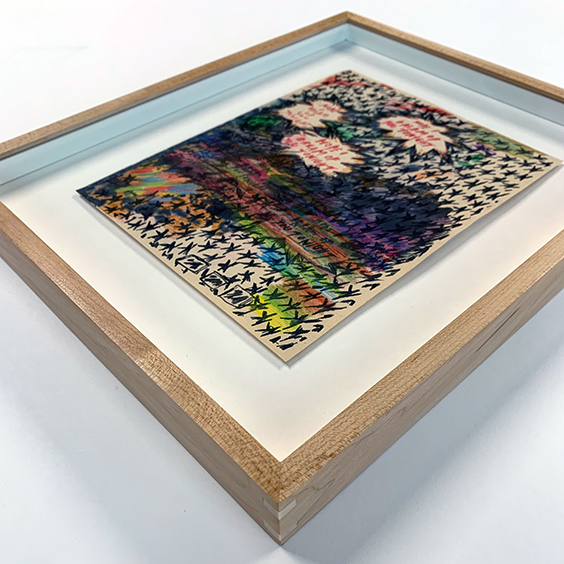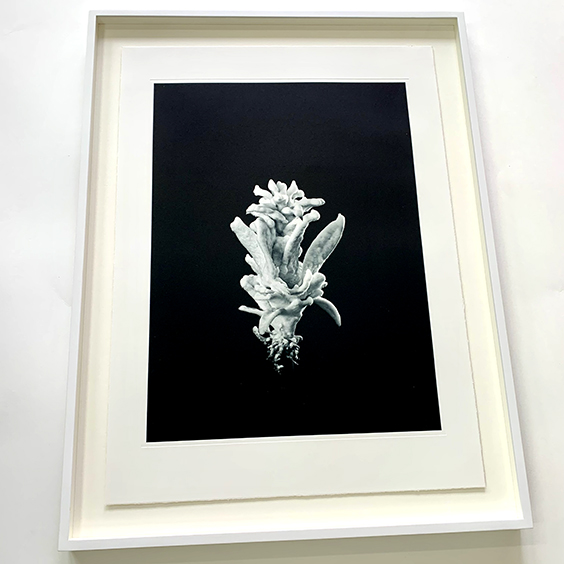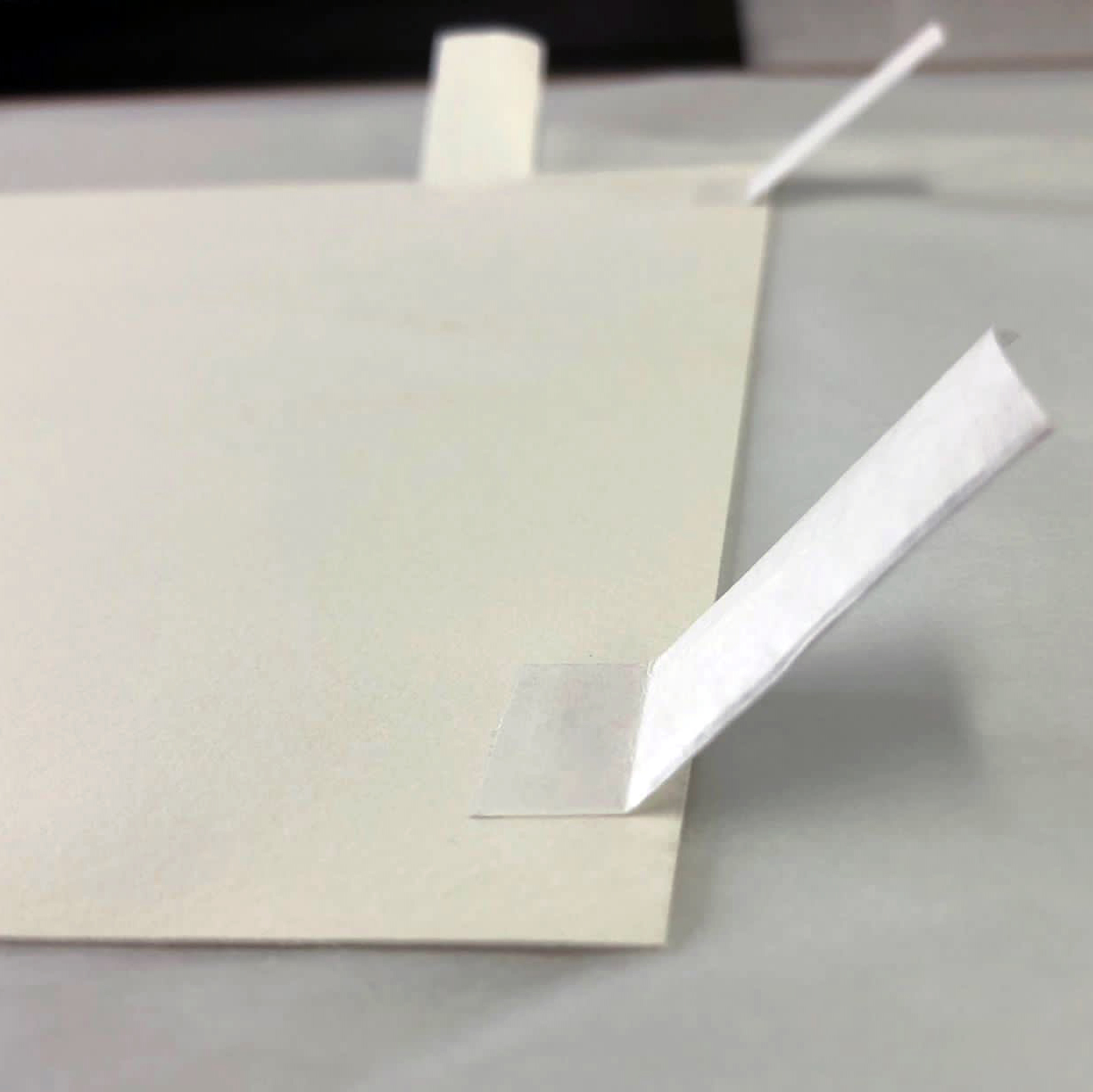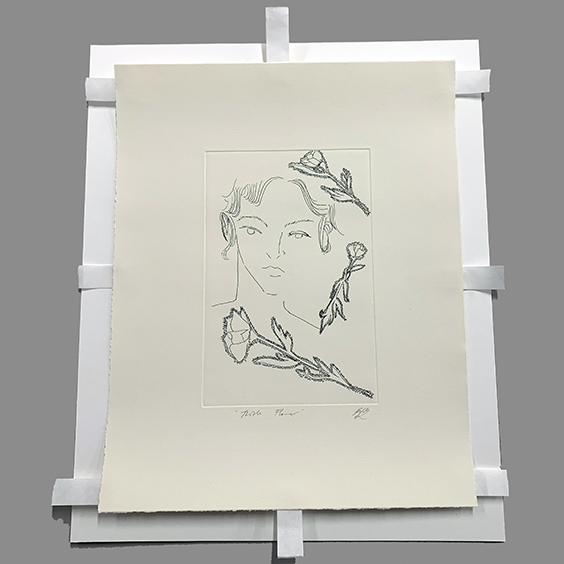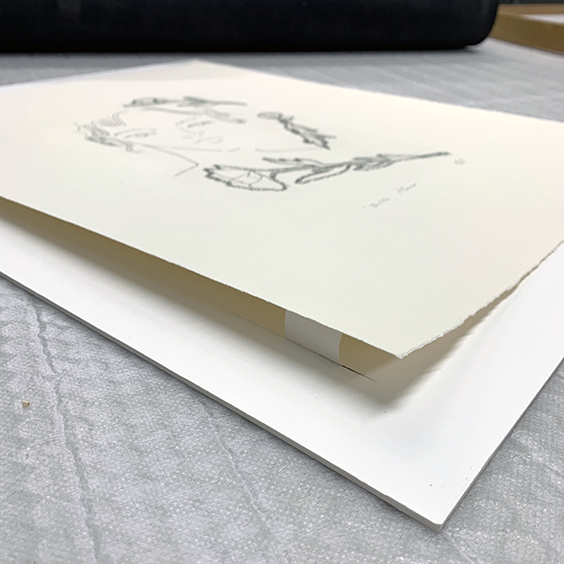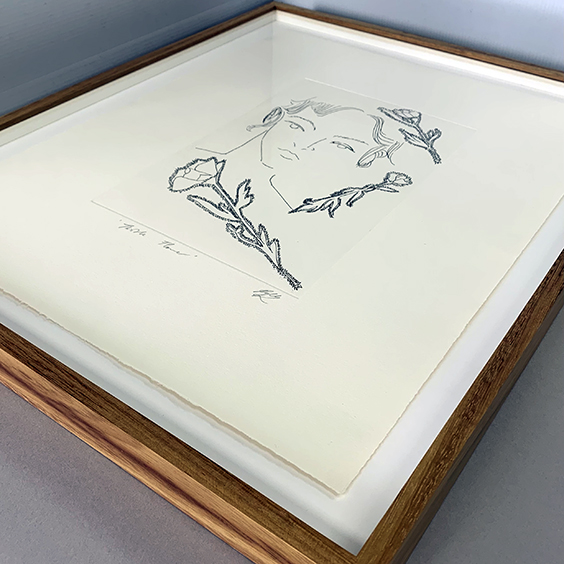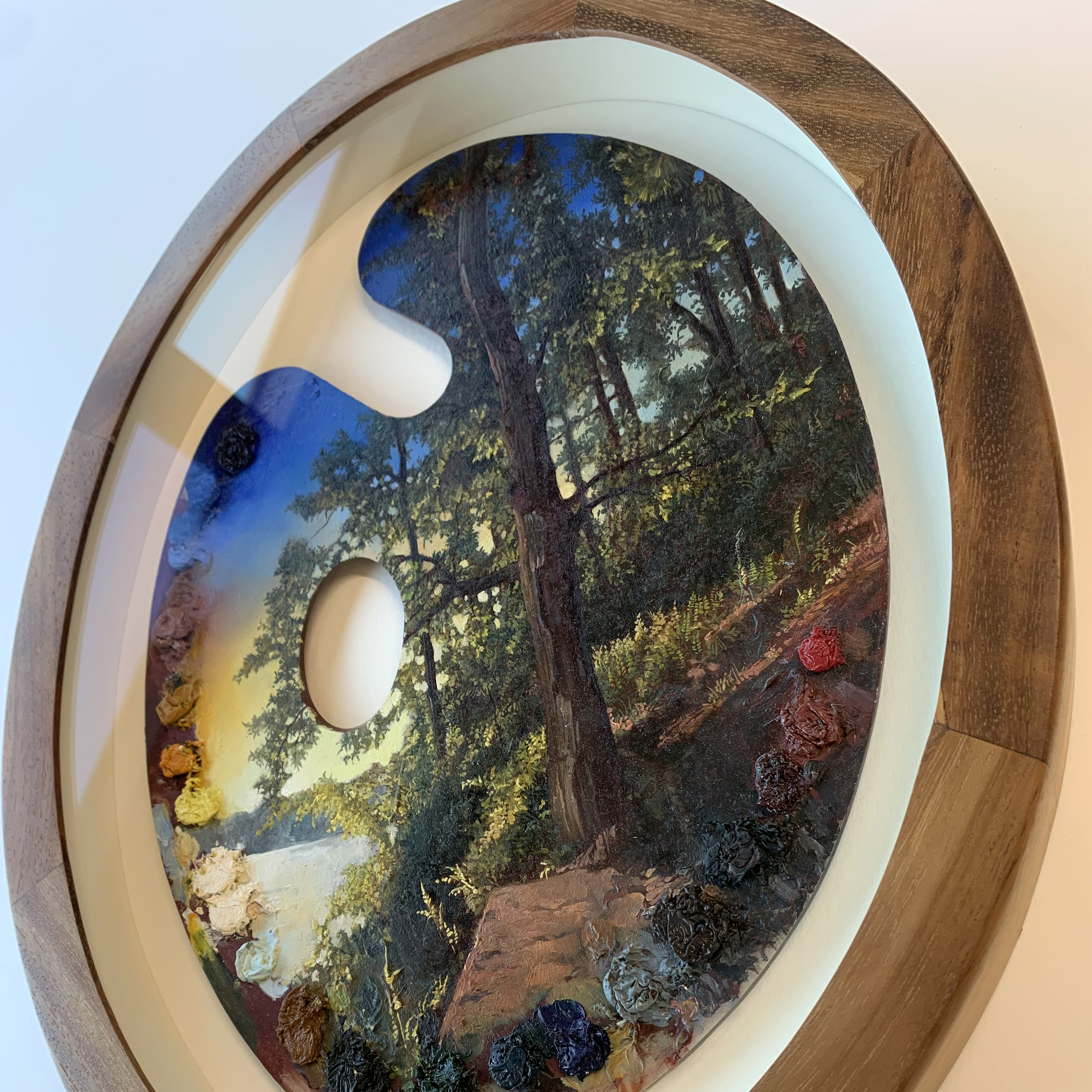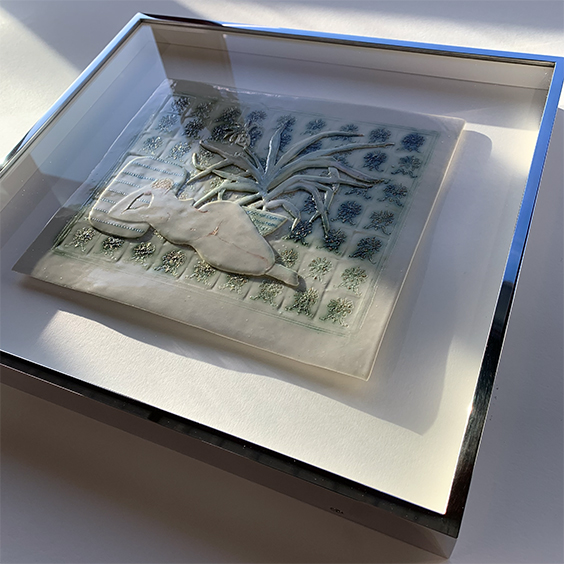Float Mounting
1. Raised float
Float mounting allows an artwork to be shown in its entirety, with edges visible, where seeing the complete object is of interest.
Combined with box framing this is our most popular mounting choice.
Typically, float mounting would describe either a raised float whereby the artwork is elevated on the thickness of a mountcard or foam-core board, or a lay-on, where the artwork is hinged directly to, or through, a mount board with no additional raise.
The maker’s handling marks remain visible, the position of the work on the paper is evident, and so, if combined with a frame well-balanced in proportion and colour, it can offer a very pure way of seeing the work.
Image (top): Daisy Parris, 'I hope I Dream of You Tonight'. Splined maple box frame, artwork float mounted and raised on mount board.
Image (bottom): Julian Charrière, 'Tropisme, 2015'. White spray finished box frame, for Parasol Unit. Artwork float mounted and raised on mount board.
